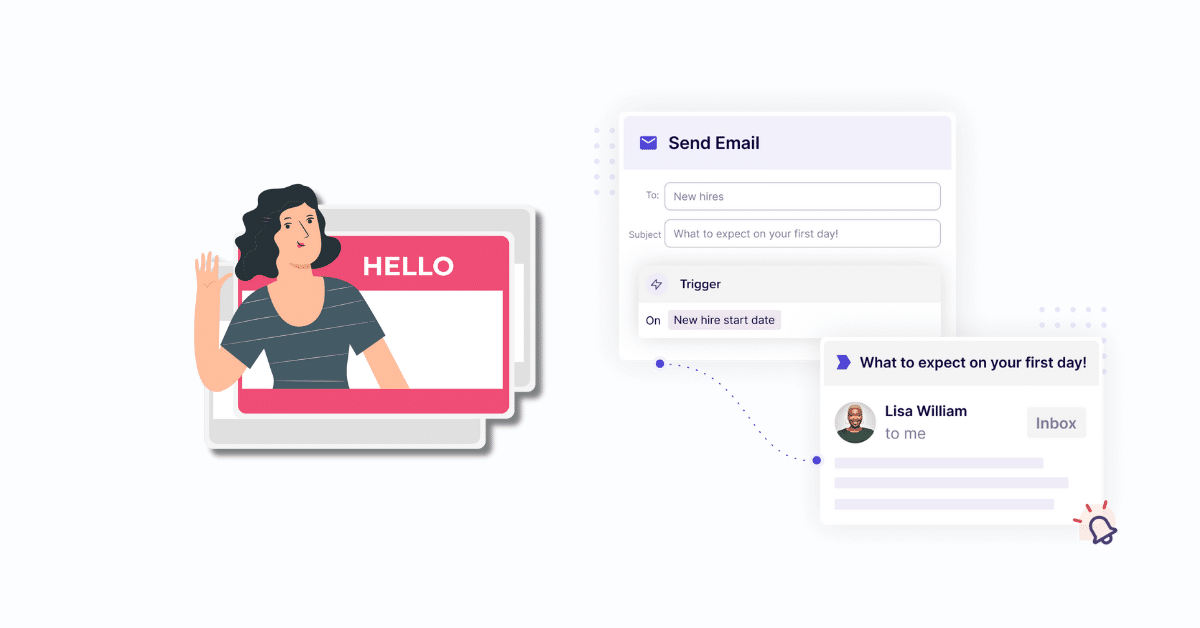Let’s be honest, we’ve all had to endure a less than ideal onboarding experience at some point in time. With 88% of employees reporting that their company does not do a good job onboarding, there’s clearly much to be desired in the new hire experience. That said, the recent shift to remote and hybrid workspaces has provided the perfect opportunity to redefine and streamline onboarding to boost employee retention, job satisfaction, and overall team productivity.
Not sure where to begin? Let’s start by getting to the bottom of remote onboarding challenges and demands. Then, we’ll dive into Cleary’s three-step solution to foster a more efficient, human-centric onboarding experience in the digital workspace.
First Impressions and Pain Points
Remote onboarding requires synthesizing multiple moving parts across various departments, including HR, IT, and recruiting. Often times, without face-to-face communication, juggling varied tasks across various virtual teams can quickly become overwhelming for everyone involved.
In order for companies to avoid information overload and make a strong first impression for new hires, they need to hone three key areas of onboarding: operational tasks, knowledge sharing, and experiential learning.
Although the typical onboarding track spans a few weeks, research indicates that it can take around eight months for new hires to reach full productivity. With this is mind, streamlining the onboarding experience to help get employees feeling comfortable, connected, and confident in their work early on is imperative.
The most recurrent pain points hindering remote onboarding success include technology unpreparedness, virtual communication challenges, and a disconnected digital office culture. All of which can be remedied in three transformational shifts:
The Blueprint
Without a thorough blueprint, remote onboarding can become a logistical nightmare. Therefore, strategically prepping a new hire’s journey through an onboarding track is essential to reducing initial stress and fostering a sense of organizational professionalism.
Said blueprint should essentially lay out a clear and trackable roadmap, encompassing essential tasks from the preboarding phase (two weeks before a new hire’s start date) to the onboarding tasks that span their initial two months. This ensures that every milestone is thoughtfully introduced and executed, ideally with a visual component, to inaugurate new hires into the operational ins-and-outs of your company’s digital workspace.
Knowledge Sharing
Knowledge sharing acts as the bridge between theoretical orientation and practical application, encompassing the transmission of both explicit and tacit knowledge. With 58% of companies using an onboarding program concentrated on paperwork and administrative processes, there’s clearly much room for improvement in this arena of employee training.
Specifically, use of an actionable onboarding outline is crucial, as it provides new hires with all the tools needed to succeed instead of just providing a vague, impersonal to-do list.
Some examples of knowledge sharing agents include interactive training sessions, mentorship programs, and cross-functional collaboratives. All of which help facilitate an deeper understanding of company culture, values, and organizational processes.
In other words, effective knowledge sharing ensures that new hires grasp not only “what” to do but also “how” to do it, instilling a sense of confidence and competence as they navigate their respective roles.
Learn by Experience
Experiential learning brings remote onboarding to life by providing a platform for immersive engagement. Remote work can often lead to feelings of isolation, making it imperative to incorporate interactive experiences that help new hires forge connections with their colleagues.
Namely, virtual team-building activities, collaborative projects, and interdepartmental interactions imbue the onboarding journey with a more human touch, dispelling the digital disconnect.
By facilitating firsthand learning experiences and social opportunities, companies can foster more active participation in the organization’s mission, turning remote hires into invested and motivated team members from the outset.
Next Steps: How Cleary Can Help
Cleary offers a streamlined, automated onboarding experience designed to enhance a new hire’s experience and reduce strain on your team.
- Templated employee journeys and tracking: Automate your onboarding process with set-it-and-forget-it workflows that can be personalized for each new hire.
- One single hub: Provide easy access to all company resources from one central location, reducing the risk of critical information getting buried across platforms.
- Shared view for managers and peers: Enhance coordination with shared dashboards that keep everyone updated about a new hire’s journey.
- Promoting Organic Connections: Spark organic connections by assigning onboarding buddies, facilitating connections, and providing visibility to recognize their efforts.
Taking onboarding from transactional to experiential, Cleary ensures a smoother onboarding process, which is critical in determining whether new hires turn into top performers or leave within the first few months.
In conclusion, onboarding is a delicate process, particularly for remote companies. Utilizing Cleary’s strategies and solutions will enable your company to streamline the onboarding process, thus enhancing the new hire experience and fostering a sense of company loyalty from day one.




